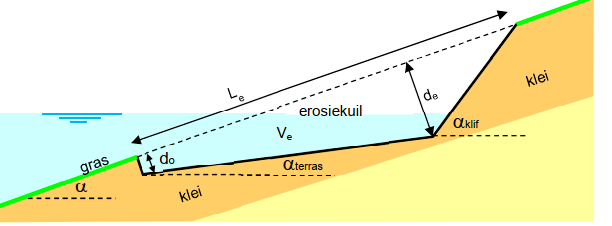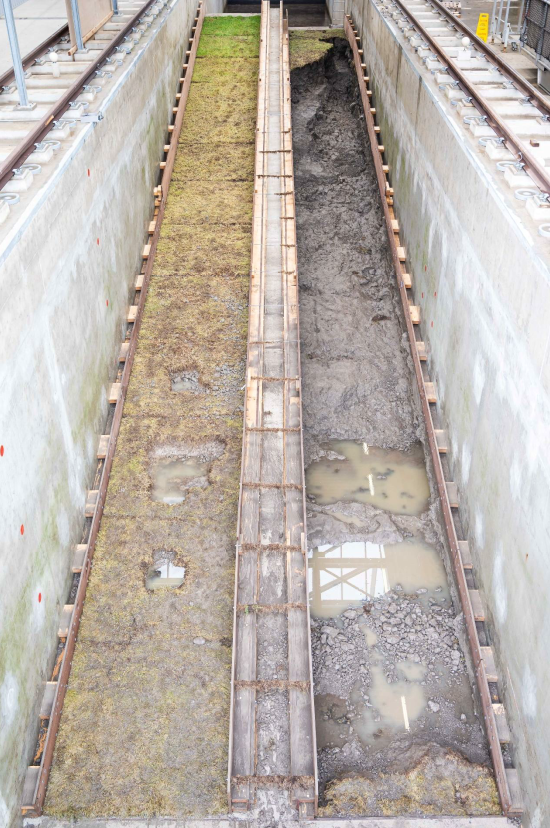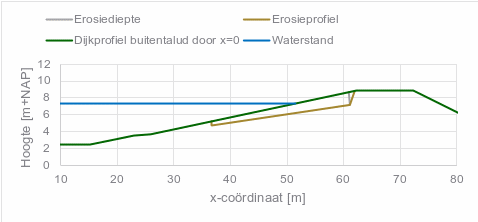H.L. Maris1*, J.A. van Zuylen1
1 Sweco Nederland B.V.
*corresponding author:
The dike along the Dollard estuary in the northeast of the Netherlands has a grass cover. This revetment is not sufficiently strong for the local hydraulic stormconditions. Traditional dike strengthening leads to the replacement of grass with a hard revetment. An alternative under investigation is the "Wide Green Dike" (WGD) concept: a grass-covered dike with an erodible outer slope. To reduce erosion a gentle slope of 1:7, naturally merging into the salt marsh located in front is designed. The advantage of the WGD concept is that it's easily adaptable (add clay) to future challenges, such as sea level rise.
The WGD needs to comply with the national flood safety standards to make it a feasible alternative. Current assessment methods and instruments don't include the strength of the clay layer. In the case of the WGD the grass cover of the dike is allowed to fail during normative conditions. Furthermore the underlaying clay layer is experienced to erosion. Using a clay erosion model the thickness of the clay layer has been designed. This model is based on existing models developed by Deltares (W.J. Klerk, R. Jongejan, 2016). The depth of the erosion profile (de in Fig. 1) relates to the thickness of the clay layer. This is the minimum thickness of the future clay layer in the design of the pilot dike.
The strength of the Dollard clay has been carried out in a series of experiments in the "Deltagoot" (P. van Steijn, M. Klein Breteler, 2021) (Fig. 2). Using the results of the experiments, the equations for calculating the erosion volume and the erosion profile has been slightly changed. The experiments confirmed the idea that not the thickness of the clay layer was normative, but the development of the erosion which eventually leads to failure of the crest (Fig. 3). This means that as long as the clay layer is sufficiently thick, the amount of erodible clay between initiation and crest determines the strength.

Figure 1: Sketch of the erosion profile with starting depth (d0, terrace and cliff) (P. van Steijn, M. Klein Breteler; 2021)

Figure 2: Erosion profile in the "Deltagoot" (Deltares) (P. van Steijn, M. Klein Breteler; 2021)

Figure 3: Erosion profile along the dike, where the crest is reached by the erosion profile
References
W.J. Klerk, R. Jongejan (2016). Semi-probabilistic assessment of wave impact and runup on grass revetments, Deltares.
P. van Steijn, M. Klein Breteler (2021). Research suitability Delta clay for pilot project Wide Green Dike. 11206194-002-HYE-0014, Deltares.
I. Surname1*, F.N. Another-Surname2 , Y. Next-Surname2
1 University Name, Country; 2 Organization Name, Country
* Corresponding author: mail.name@organization.org


